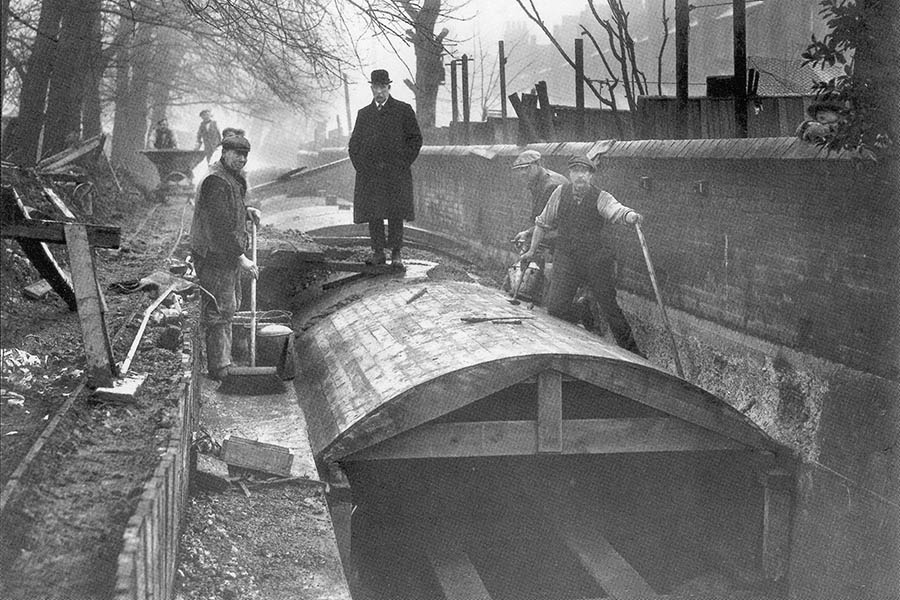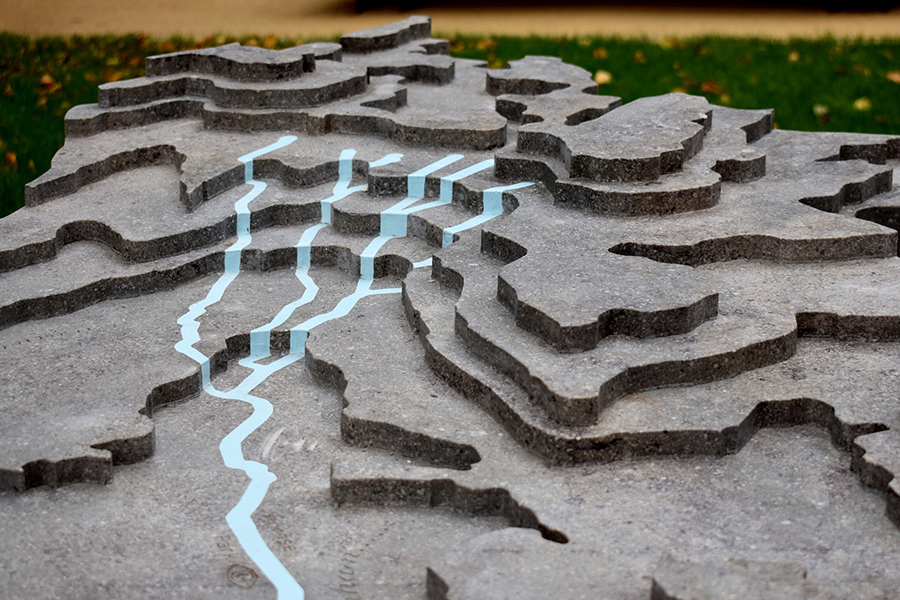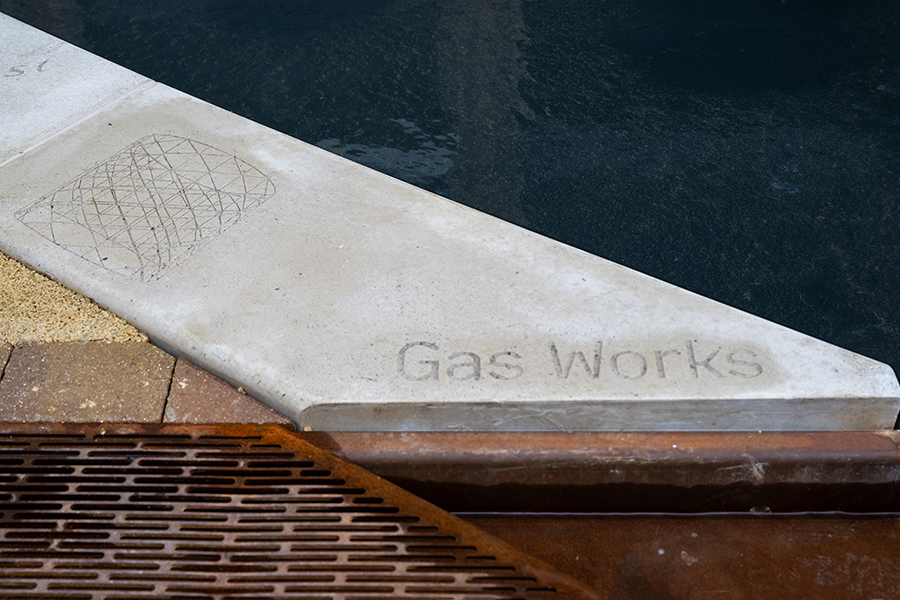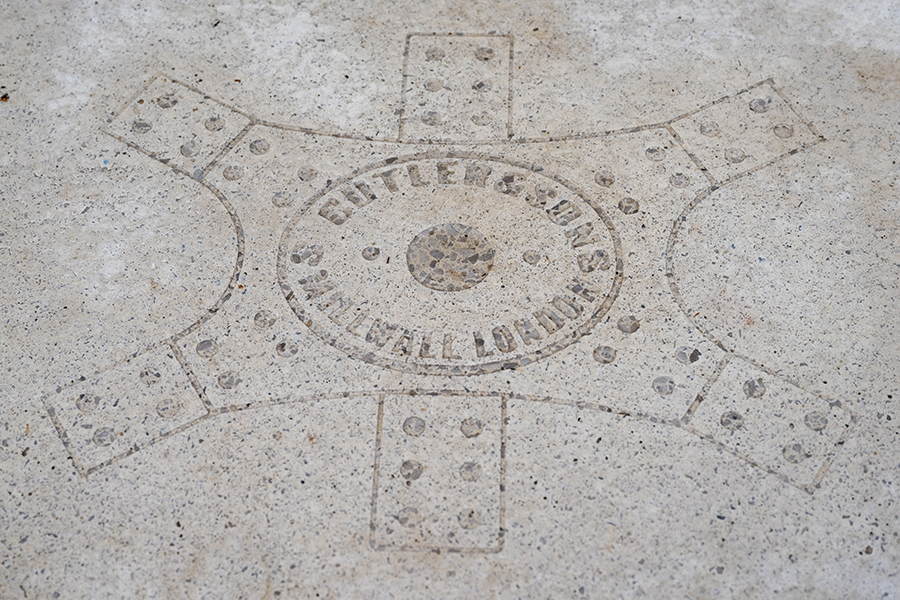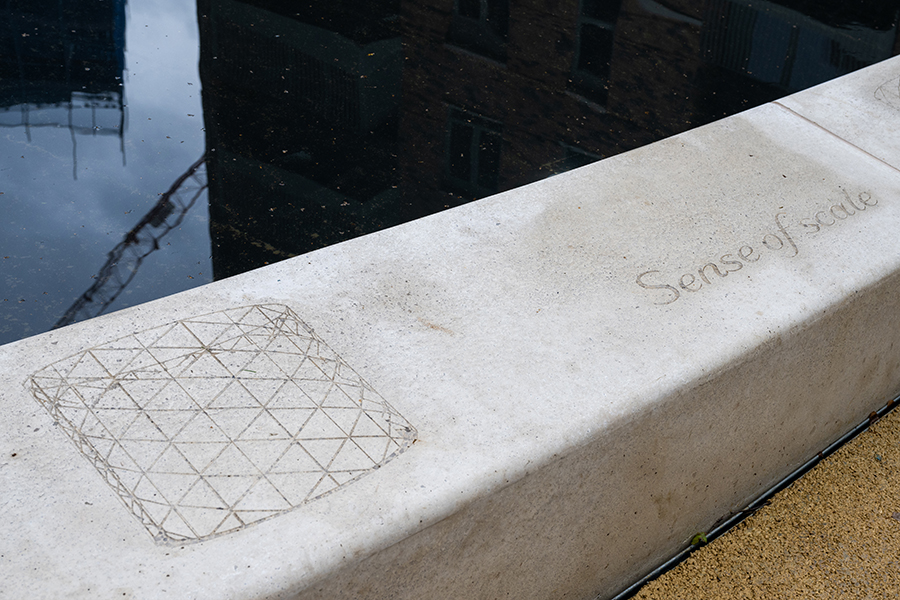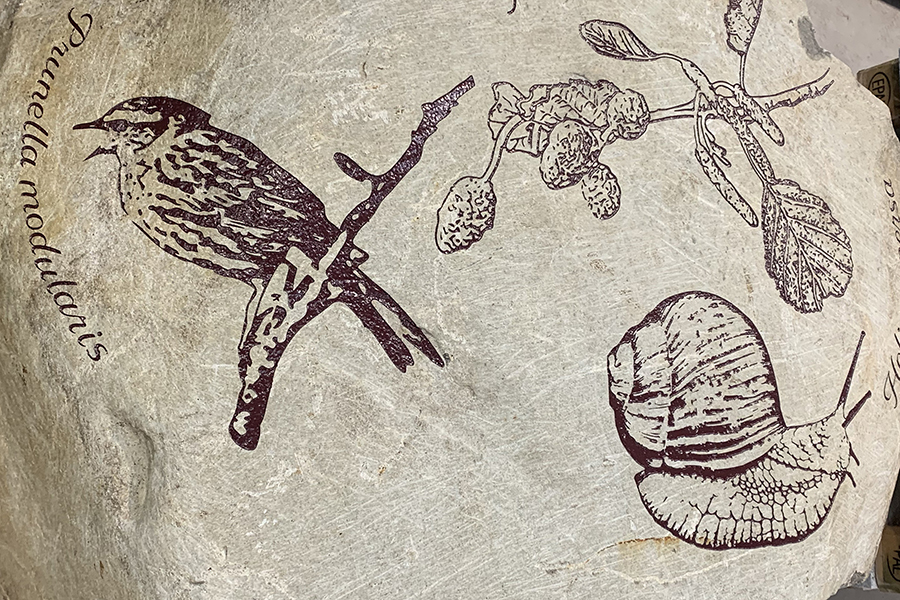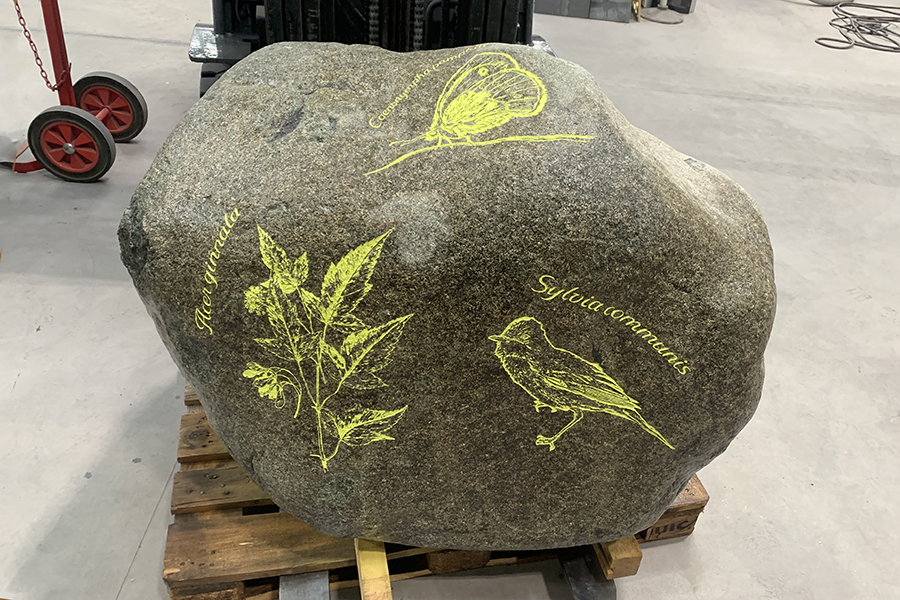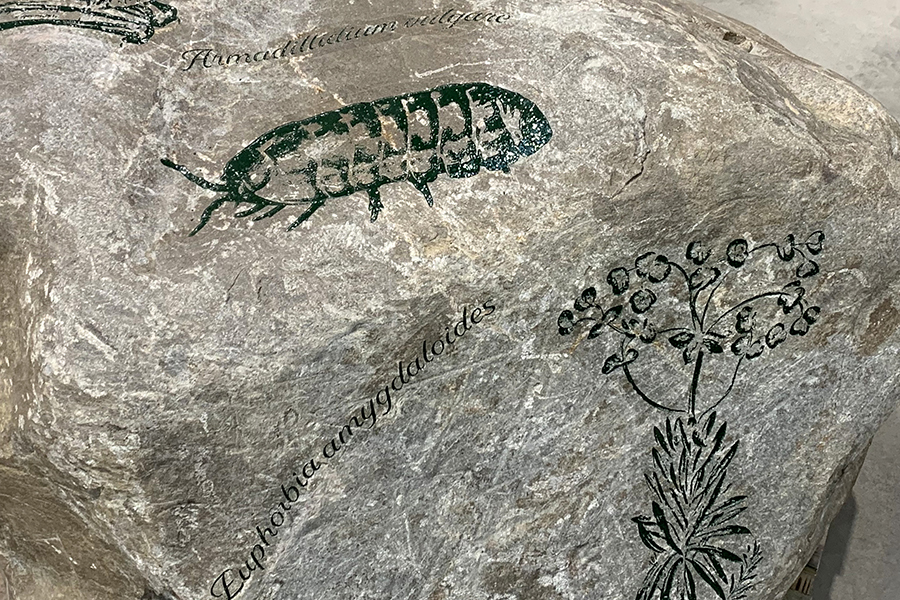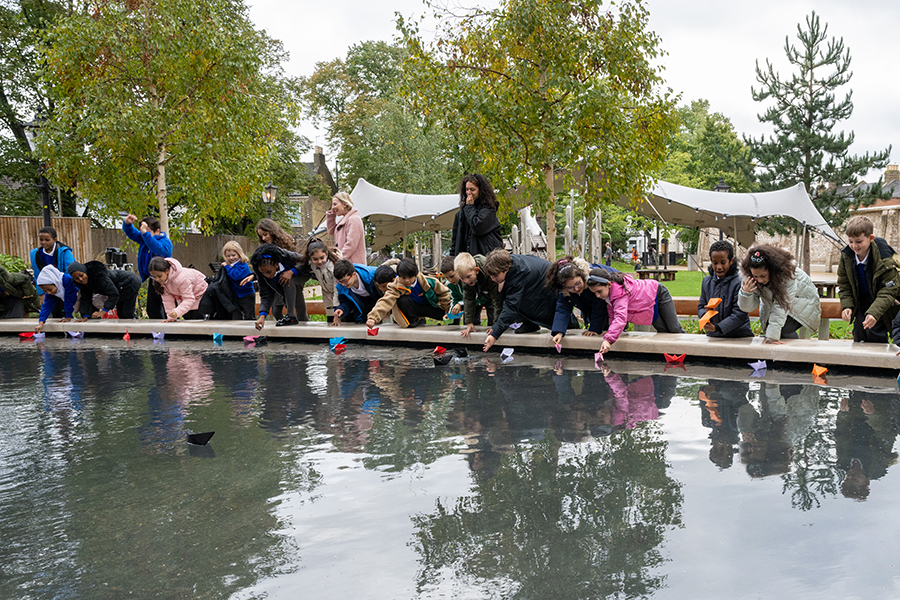Clarendon Commissions by Rachael Champion
This collection of interpretation artworks by artist Rachael Champion are embedded within the new mixed-use development of Clarendon Gasworks, strengthening the sense of place by revealing the site’s hidden natural landscape and former industrial heritage.
D-P-Q developed the artist brief and led the commissioning process. Our initial appointment for client St William, part of the Berkeley Group, commenced in 2017 with the creation of an outline cultural strategy in consultation with local residents. This strategy set the direction of key themes and highlighted opportunities for cultural and creative activity during each construction phase, including meanwhile uses, for the entire development site.
Consultation with local people in the development of the cultural strategy drew out the significance of local history and geography in continuing and strengthening Clarendon’s place narrative. Our approach sought to create opportunities to embed culture and the arts within the development, strengthening community cohesion and sense of place.
Each new piece compliments a different construction phase and builds on a distinct cultural theme; the history of the former gasworks, the culverted Moselle River and the biodiversity that thrives in the green corridor bordering the edges of the development. Together they enrich the narrative of the development, revealing the site’s history and rooting the scheme within its context.
As arts commissioner, our role continued from brief writing to commissioning through to detailed coordination between the artist and client and design team during the design development and delivery stage. The artist selection process followed an open call advertised nationwide and locally, and which expressly encouraged local artists to apply. To help the client have greater certainty of what the final artworks may look like we selected five artists from the shortlist to work up initial proposals to present to the client and design team. The selection panel unanimously selected artist Rachael Champion.
Course & Flow
The first artwork brief was developed following consultation with the community and aimed to recognise and celebrate the River Moselle and its route through the site. The artwork is located at the point at which the river flows into the site. Running from Highbury to the River Lea, three-quarters of the Moselle is culverted. The fact that the river is briefly visible and audible at this point in the site is largely unknown to local residents, and the aim of this brief was to call attention to its presence and route.
Course and Flow is a sculpture and seating apparatus that functions as a topographical map of the Moselle Brook taking on the shape of the borough of Haringey and it was the first commission to be delivered in compliance with the approved Eastern Quarter Cultural Strategy. The role of interpretation in this project is to give park users and residents illustrative information about the Moselle and its route, from its starting spring in Highbury, through the site to the River Lea.
This three-dimensional map brings into focus the varied topography of the area, from the source of the Moselle River in Queen’s Wood to the west at 130 metres above sea level to the river’s outflow into the River Lea. Words, images, and phrases relating to significant locations along the river’s course adorn the surface of the artwork, endowing the map with notions of the river’s social history and context. The artwork was revealed with the launch and opening of the Eastern Quarter, simultaneously marking the opening of the new public park.
The artwork is fabricated out of Derbyshire Mandale limestone, a warm light-grey British stone known for its’ durability and abundant fossil content. The footprint of the artwork is derived from the rough stone block hewn from the quarry. The edges of the stone have been left intact to function as a seating option for viewers. The drill holes made at the quarry for removing the stone have been left visible as well as the registration cut for the CNC waterjet machine. These elements have intentionally been left to highlight the journey of the artwork from the quarry to the site.
Remembering Giants
The second artwork brief sought to recognise and celebrate the former gasholders, which had until recently been a defining feature of the local skyline. We highlighted two areas where the retained bases of the gasholders could be expressed; a segment of the brick base structure of Gasholder 1, adjacent to the community café, which would become a new water feature, whilst a segment of the brick base structure of Gasholder 3, could be revealed in the landscaping of the Moselle Walk.
Revealing the retained gas holder foundations in situ within the publicly accessible landscaping would help to convey the siting and the scale of the gas holders and their importance in shaping this part of Haringey. The addition of the artwork here gives park users and residents key information about these two gasholders, which were at the forefront of engineering for their time.
The Gasholder inspired-artwork was the second commission to be delivered in compliance with the approved Eastern Quarter Cultural Strategy. As the new development is unable to retain any of the above ground gas holder structures, which were until recently a defining feature of the local skyline, the artwork seeks to recognise and celebrate the industrial heritage of the site.
The artwork focuses on words and symbols that convey the presence of these monumental industrial structures, specifically their scale, function and meaning for local residents in the area. The artwork adorns the surface of the edge of Hornsey Park’s water feature, representing a section of the diameter of Gas Holder Number 1. Remembering Giants transforms personal reflections from locals as a constellated poetry, combining descriptions and metaphors with facts and technical specifications about these remarkable industrial structures.
Boulders of Biodiversity
Our third and final brief recognised the value of the rich ecology which had developed alongside the gasworks after their decommissioning and sought subtle interventions to highlight the variety of species inhabiting the site boundary along the new Moselle Walk. This proposal incorporates input from the community and aims to recognise the diversity of wildlife. We encouraged the artist to develop proposals that would create a discovery trail of wayfinding elements along the Moselle Walk, to spark interaction and play.
Currently in fabrication, Boulders of Biodiversity are a series of sandblasted natural stones depicting images of a range of species that can be found around the Moselle River Walk. The artworks are the final commission to be delivered in compliance with the approved Eastern Quarter Cultural Strategy.
This project recognises the value of the rich ecology that has developed alongside the gasworks and after their decommission and highlights the variety of species inhabiting the site boundary along Moselle Walk. As a collection the artworks create a discovery trail along the Moselle Walk, encouraging interaction, discovery, and play.
Each boulder features representations of a variety of species, from invertebrates to birds to small mammals and trees. This diverse assortment of organisms is intentionally arranged together to highlight the interconnectivity within ecosystems. The boulders of varying size have had imagery sandblasted onto their faces, which have been cut and planned prior to sandblasting. The sandblasted designs were then filled with a coloured epoxy resin.
Community Engagement
Our original cultural strategy was developed with community engagement, particularly in regards to the choice of themes for potential artworks. Running through each of the three commissions, public consultation was a key part of the artist’s brief. This was originally planned as a series of face-to-face public events, however due to the Covid-19 pandemic it was agreed that the public consultation would have to be carried out online. A website was created specifically for this purpose.
The artist’s engagement attracted a core group of residents who have been deeply involved with public engagement for Clarendon Gas Works from the start. The engagement was in-depth and the rich input fed into the detail of each of the commissions. For the Moselle Brook artwork community engagement highlighted the importance of recreational green space along the course of the brook; for the Gasholder Artwork consultation provided words and phrases describing people’s connections to the gasholders; in the Nature Artwork it highlighted species spotted by local residents.
